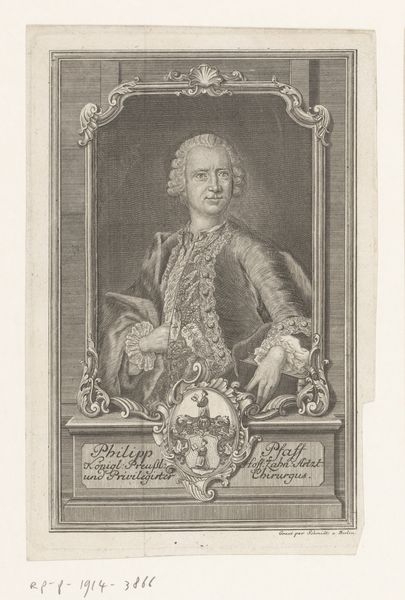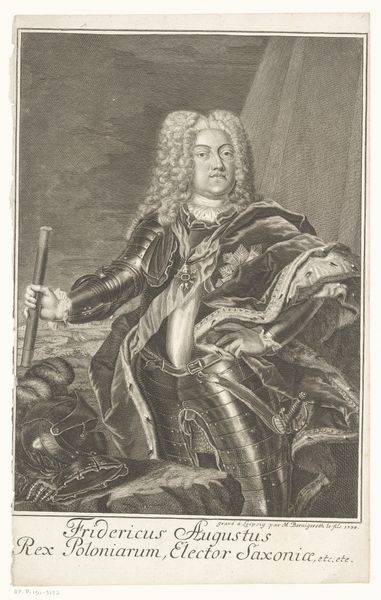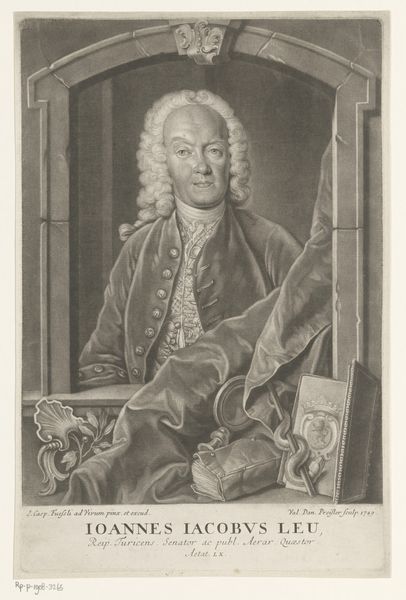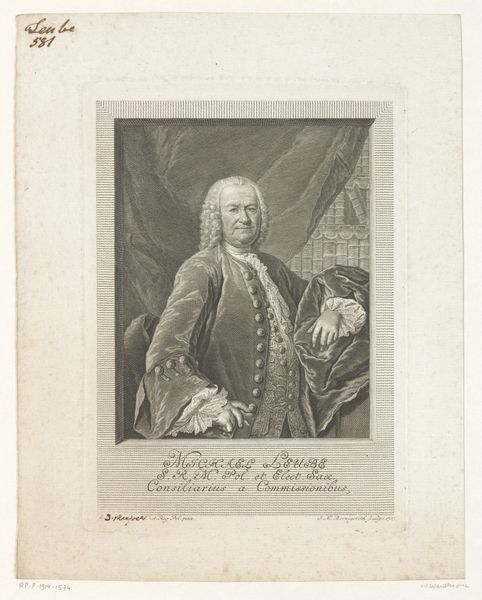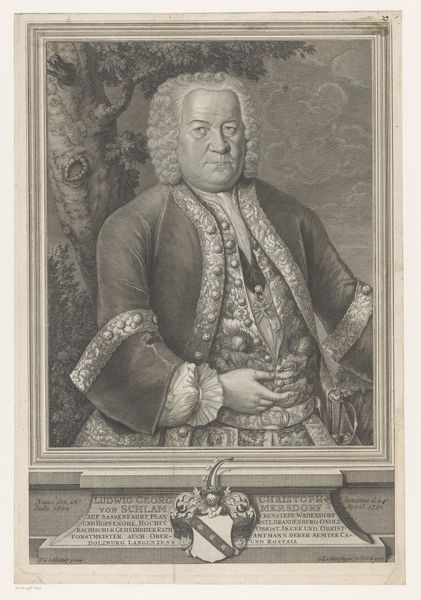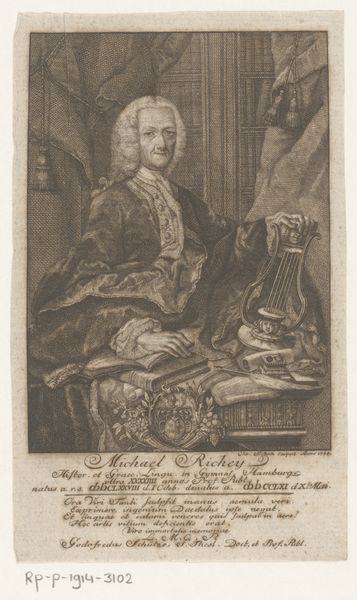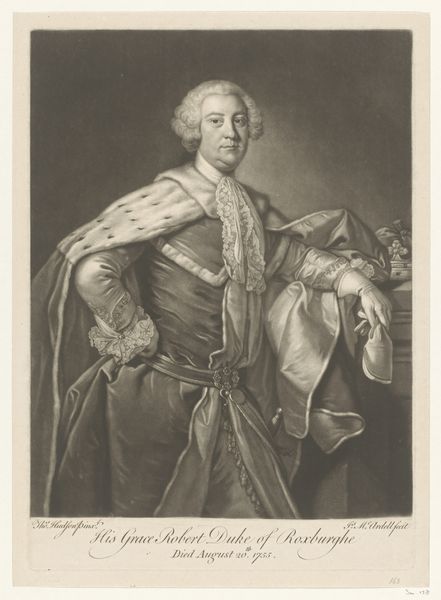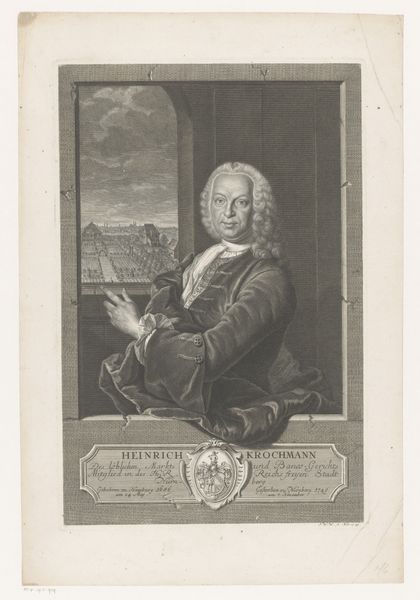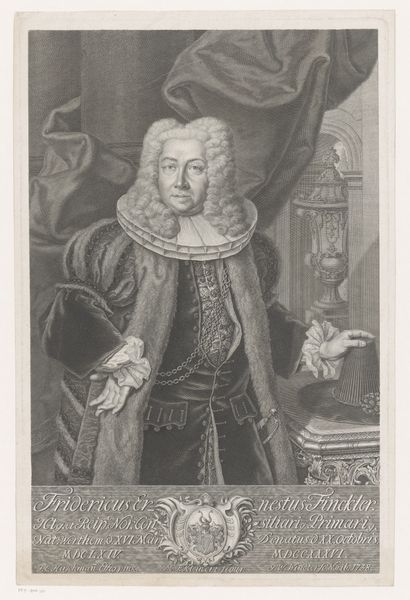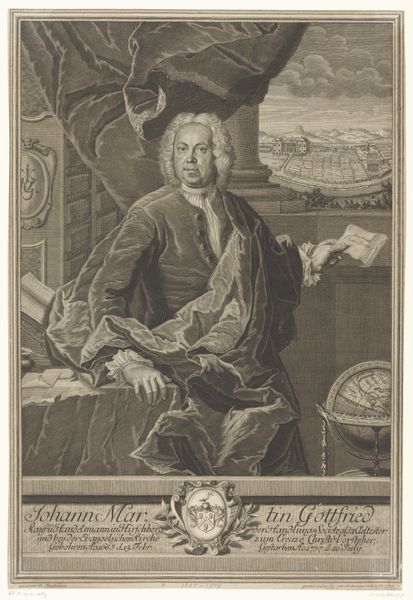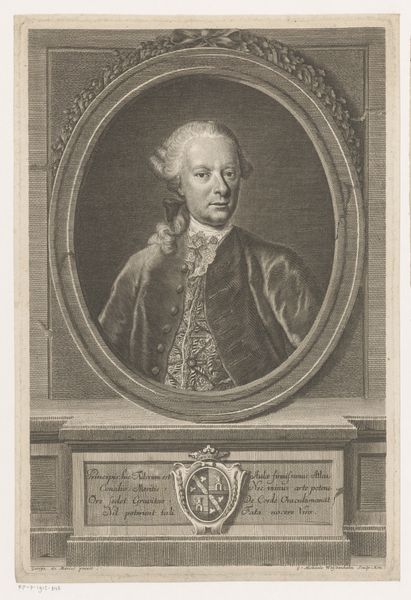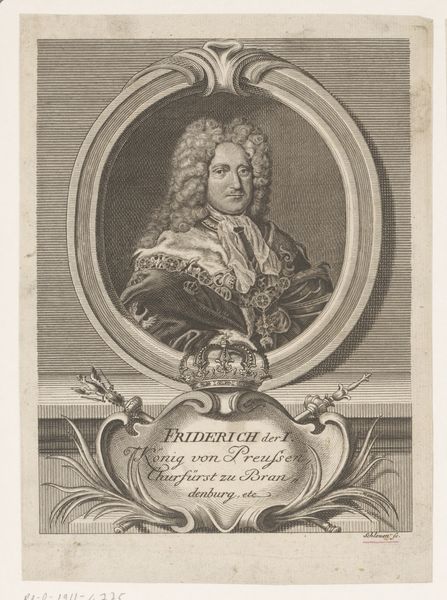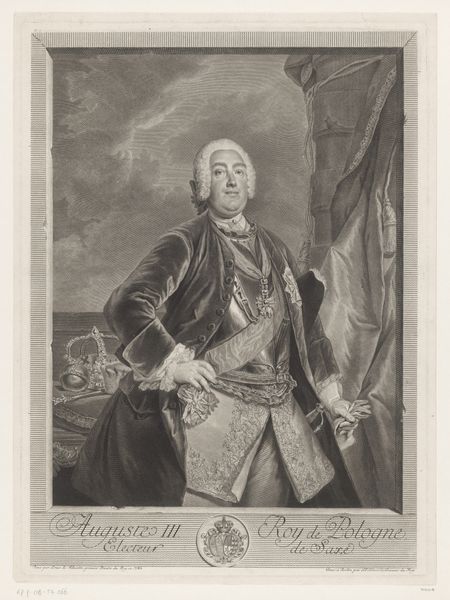
print, engraving
#
portrait
#
baroque
# print
#
old engraving style
#
history-painting
#
engraving
Dimensions: height 329 mm, width 218 mm
Copyright: Rijks Museum: Open Domain
Curator: Standing before us is a print dating from between 1733 and 1763, a "Portret van August III van Polen" created by Johann Martin Bernigeroth. Editor: Right, and my immediate sense is…power. But also, a strange sort of weariness. He’s armored and crowned, yes, but his expression is almost…resigned? Curator: That duality makes sense when we consider the context. August III was King of Poland and Elector of Saxony, navigating a complex political landscape. The armor, of course, isn't just about warfare; it's a symbol of strength, protection, a visual claim to authority deeply rooted in European history. The crown signifies his divinely ordained right to rule. These symbols are very direct, drawing upon well established cultural values. Editor: And there's that Polish-Saxon coat of arms hovering there in the top corner. It feels almost…tacked on, like an afterthought. The landscape background is stormy, too. Everything in this piece contributes to that underlying sense of struggle. Curator: Notice also the placement of the crown at the lower left, juxtaposed against his figure. It’s almost as though the symbols of power are grounded, literally, while his gaze extends beyond them. It is such a deliberate use of established codes to evoke both power and the challenges to it. Editor: Right. It makes me think of the psychological weight of leadership, how the performance of power might feel from the inside. The artist captured this in the figure’s soft eyes and almost bored-looking demeanor. Bernigeroth manages to convey so much in this single, monochromatic print. There is incredible detail, almost photographic-like in the textures of his armor, his flowing wig. You are compelled to pause to truly study and take in this face. Curator: Indeed. The print's monochrome quality, while characteristic of engravings of that era, also adds to that feeling of gravity and timelessness, connecting him to other leaders from history, drawing upon our shared historical memory. Editor: Ultimately, for me, it's a really striking portrait that feels more modern in its psychological complexity than one might initially expect. Curator: Absolutely, it reveals how artists could work with symbolism and portraiture to probe the personal dimension behind the veneer of power, allowing cultural memory to inform fresh interpretation.
Comments
No comments
Be the first to comment and join the conversation on the ultimate creative platform.
